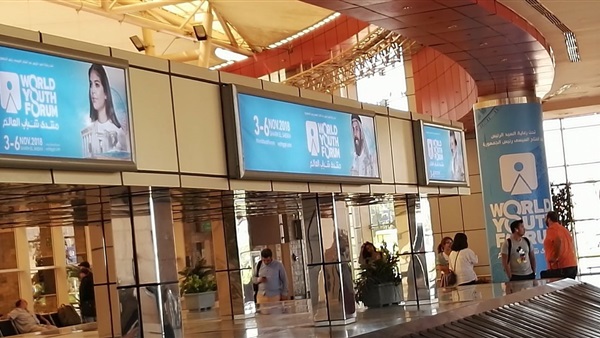
The level of political participation by Arab youth is one of the lowest in the world, according to the United Nations Development Programme's (UNDP) Arab Human Development Report.
The report's sixth edition was published on Tuesday, highlighting the challenges faced by Arab youth, five years after the so-called "Arab Spring."
It attributed the low political participation level to the nature of political life in Arab countries, “which is generally exclusionary.”
The Arab Human Development Report, since its launch in 2002, has presented a description of the dynamics of human development in the Arab region. It seeks to provide a common platform for the debate on the future of development in the region by considering the situation of youth.
The report defines youth as individuals of ages 15-29, which reflects the prolonged transition to adulthood faced by many young men and women in the Arab region.
It mentions however that the interest of young people in political participation is rising. In countries undergoing political transition, youth show more interest in politics relative to older-age groups.
The manifestation of this interest, however, “rarely translates into active participation except among more well educated young people.”
However, even those generally prefer what the report calls “informal channels of engagement” like demonstrations to regular participation in the form of elections despite the lack of significant legal or institutional barriers to formal youth participation.
This behavior is partially due to the lack of confidence of young people in the democratic process.
During the events of 2011 and their aftermath, young people participated in protests, at times massive, to voice their demands in states like Egypt and Tunisia. In 2013, youth participation in public protests in the Arab region exceeded 18 percent, compared with 10.8 percent in middle-income countries, the report said.
However, youth voting rates were the lowest globally; 68.3 percent, compared with 87.4 percent in middle-income countries.
Growing populations
Over the past 50 years, average population growth rates in the Arab region have been among the highest in the world, according to the report.
Most recent statistics indicate that two thirds of the Arab region’s population is below 30 years of age, half of which falling within the 15-29-year age bracket.
The number of young people in the region is estimated at over 100 hundred million, the report states.
By 2030, the share of youth between the age of 15 and 29 will reach 25.9 percent of the population, before retreating to 22.1 percent in 2050, the report projects.
There is also a trend of rising number of youth in urban areas, with Egypt’s reaching 42 percent, Tunisia 67 percent, and Kuwait 98 percent.
The report argues that “young people are not a problem or a burden on development; they are rather a key resource for resolving the problems of development in the region.”
Disenfranchised workforce
The report indicates that many young people with high educational qualifications must wait for long periods that may exceed 1.5 years to find jobs in the public sector. They usually end up accepting “unstable jobs in the private sector that offer low wages and poor working conditions” as a solution.
“There seems to be no prospect of improvement in the ability of governments to create sufficient suitable jobs, particularly because of the decline in oil prices and the negative effects of the decline on economic growth throughout the region, not merely in oil-producing countries.”
By 2020, the Arab region needs to create more than 60 million new jobs to absorb the number of workforce entrants and stabilise youth unemployment, according to the report.
Unemployment among youth in the Arab region is the highest among world regions.
The unemployment rate among young women is 47 percent in the Arab region, compared to a world average of 16 percent. Meanwhile, the unemployment rate among young men is 24 percent, compared to a world average of 13 percent.
The inability to find suitable job opportunities was a significant factor that contributed to the unrest afflicting the region in the past few years, as the report points out. It is also “a fundamental reason” for the growing phenomenon of immigration among young people in search of better conditions.
The report attributes this unemployment to weak economic productivity and low competitiveness in most Arab countries; the prevalence of nepotism and the reliance on social connections are also issues that hinder the youth's prospects of finding suitable jobs.
Towards more inclusion
The report also mentions other factors contributing to the dynamics of youth disempowerment including poor quality public services in health and education, mismanagement of social diversity, the prevalence of concepts and practices that hinder gender equality and prolonged conflicts that undermine the gains of development.
By 2050, three of four people in the Arab region will be living in high conflict risk countries. This in turn undermines human development gains as in the case of Libya and Syria where HDI values regressed below pre-conflict values, sinking to levels last seen 15 years ago.
The report provides a number of propositions intended to empower the youth and provide them with opportunities to fulfill themselves. These include enhancing the basic capabilities of young people through focusing on the quality of education and health, widening opportunities available to the youth, achieving peace and stability without which sustainability cannot be realized.




